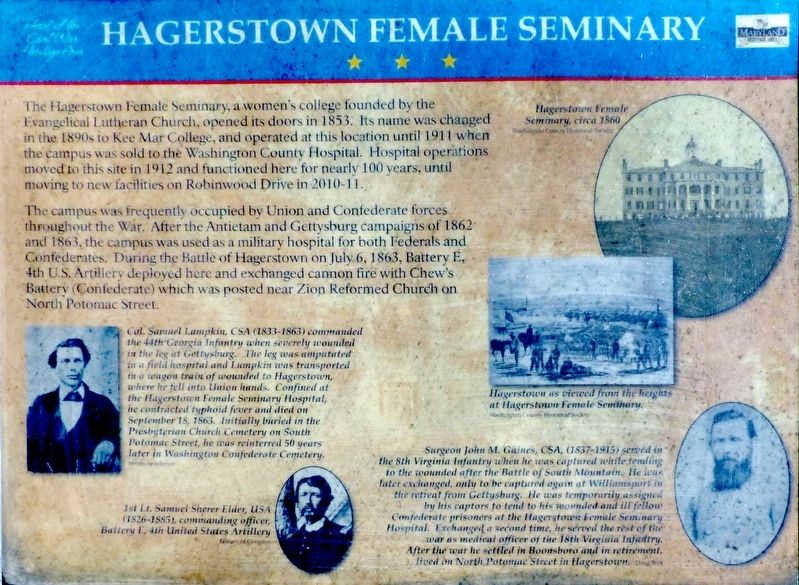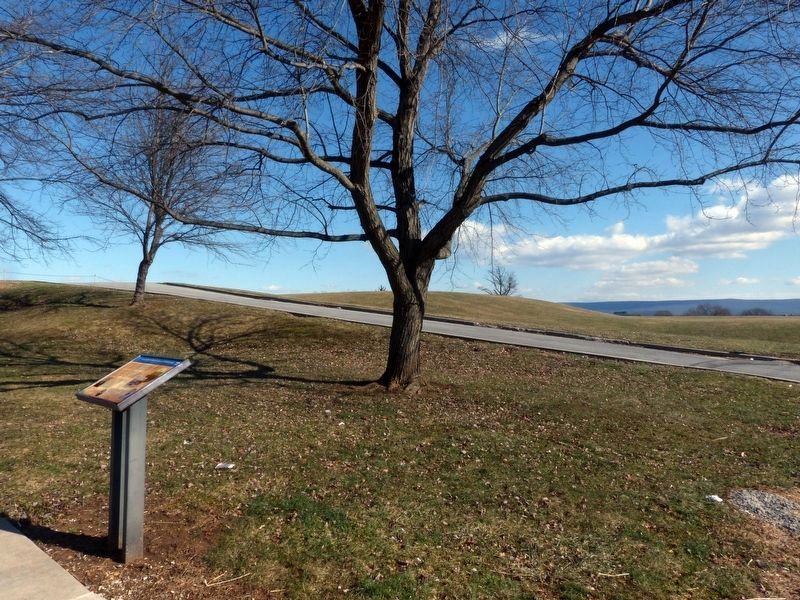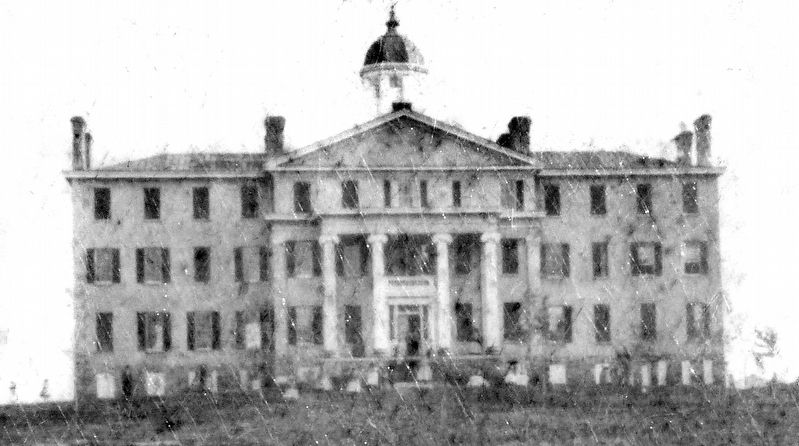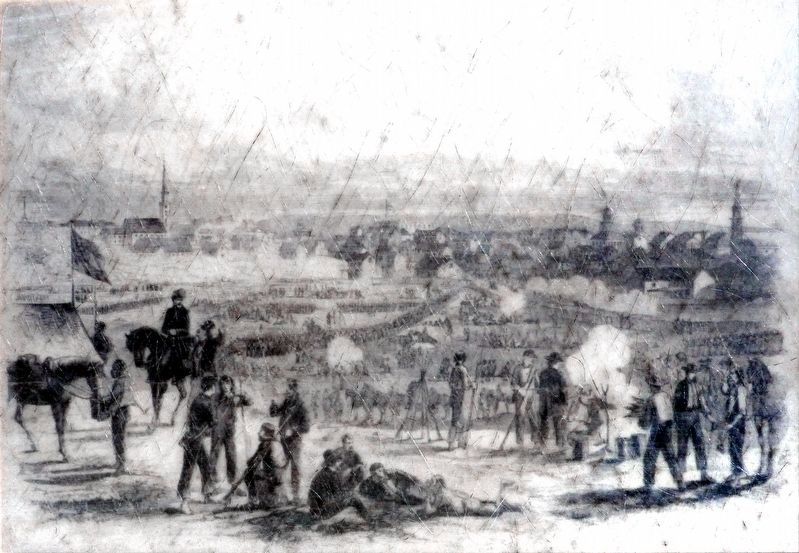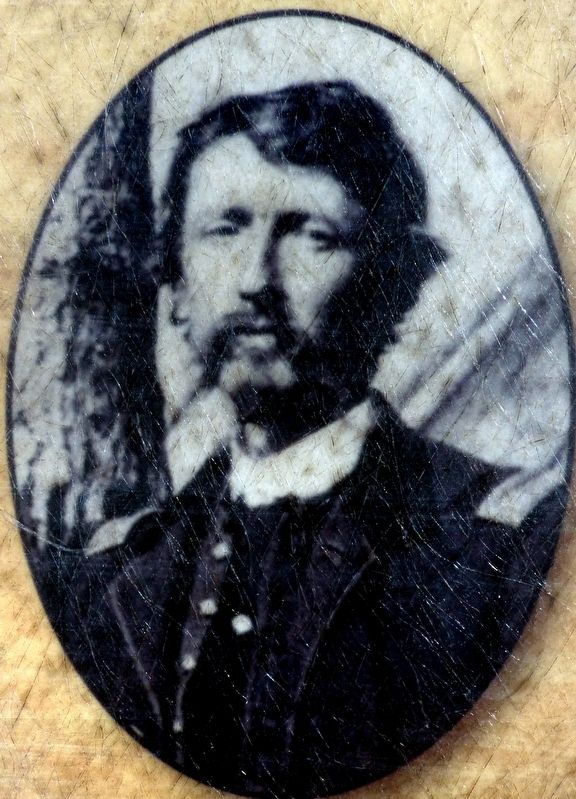Hagerstown in Washington County, Maryland — The American Northeast (Mid-Atlantic)
Hagerstown Female Seminary
The Campus was frequently occupied by Union and Confederate forces throughout the War. After the Antietam and Gettysburg campaigns of 1862 and 1863, the campus was used as a military hospital for both Federals and Confederates. During the Battle of Hagerstown on July 1863, Battery E, 4th U.S. Artillery deployed here and exchanged cannon fire with Chew’s Battery (Confederate) which was posted near Zion Reformed Church on North Potomac Street.
Col. Samuel Lumpkin, CSA (1833-18 63) commanded the 44th Georgia Infantry when severely wounded in the leg at Gettysburg. The leg was amputated in a field hospital and Lumpkin was transported in a wagon train of wounded to Hagerstown, where he fell into Union hands. Confined at the Hagerstown Female Seminary Hospital, he contracted typhoid fever and died on September 18, 1863. Initially buried in the Presbyterian Church Cemetery on South Potomac Street, he was reinterred 50 years later in Washington Confederate Cemetery.
Steven Stoteforyer
1st. Lt. Samuel Sherer Elder, USA (1826-1885), commanding officer, Battery E, 4th United States Artillery
Library of Congress
Hagerstown as viewed from the heights at Hagerstown Female Seminary.
Washington County Historical Society
Surgeon John M. Gaines, CSA (1837-1915) served in the 8th Virginia Infantry when he was captured while tending to the wounded after the Battle of South Mountain. He was later exchanged, only to be captured again at Williamsport in the retreat from Gettysburg. He was temporarily assigned by his captors to tend to his wounded and ill Confederate prisoners at the Hagerstown Female Seminary Hospital. Exchanged a second time, he served in the rest of the war as a medical officer in the 18th Virginia Infantry. After the war he settled in Boonsboro and in retirement, lived on North Potomac Street in Hagerstown.
Doug Beer
Hagerstown Female Seminary, circa 1860
Washington County Historical Society
Topics. This historical marker is listed in these topic lists: Education • Science & Medicine • War, US Civil • Women.
Location. 39° 38.212′ N, 77° 43.042′ W. Marker is in Hagerstown, Maryland, in Washington County. Marker is at the intersection of East Baltimore Street (U.S. Alt 40) and King Street, on the right when traveling west on East Baltimore Street. Touch for map. Marker is at or near this postal address: 200 King Street, Hagerstown MD 21740, United States of America. Touch for directions.
Other nearby markers. At least 8 other markers are within walking distance of this marker. St Johns Episcopal Churchyard. (about 500 feet away, measured in a direct line); St. John's Cemetery (about 500 feet away); Thomas Kennedy Park (approx. 0.2 miles away); Thomas Kennedy (approx. 0.2 miles away); Hager Mill (approx. ¼ mile away); Hagerstown Charity School (approx. 0.3 miles away); Our Journey Transports Us Through Time (approx. 0.3 miles away); Elliott-Bester House (approx. 0.3 miles away). Touch for a list and map of all markers in Hagerstown.
More about this marker. I had trouble with the names I entered as Steven Stoteforyer and Doug Beer.
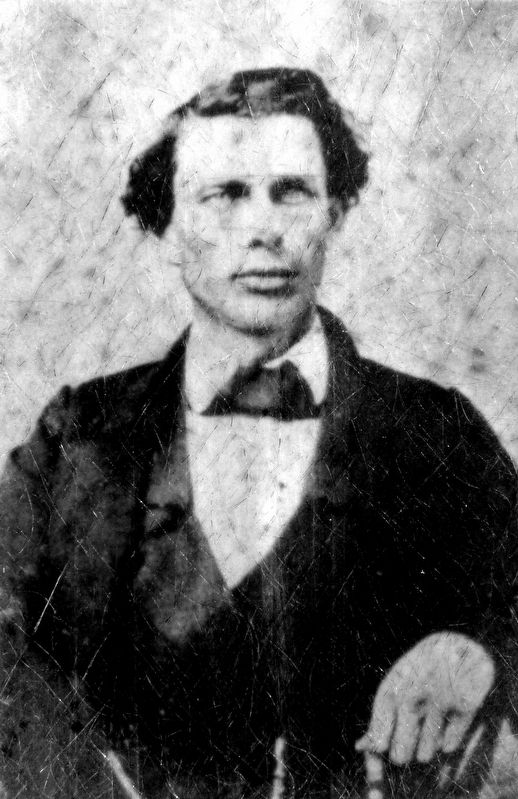
Photographed By Allen C. Browne, January 25, 2019
5. Col. Samuel Lumpkin, CSA
Col. Samuel Lumpkin CSA (1833-1863) commanded the 44th Georgia Infantry when severely wounded in the leg at Gettysburg. The leg was amputated in a field hospital and Lumpkin was transported in a wagon train of wounded to Hagerstown, where he fell into Union hands. Confined at the Hagerstown Female Seminary Hospital, he contracted typhoid fever and died on September 18, 1863. Initially buried in the Presbyterian Church Cemetery on South Potomac Street, he was reinterred 50 years later in Washington Confederate Cemetery. Close-up of photo on marker
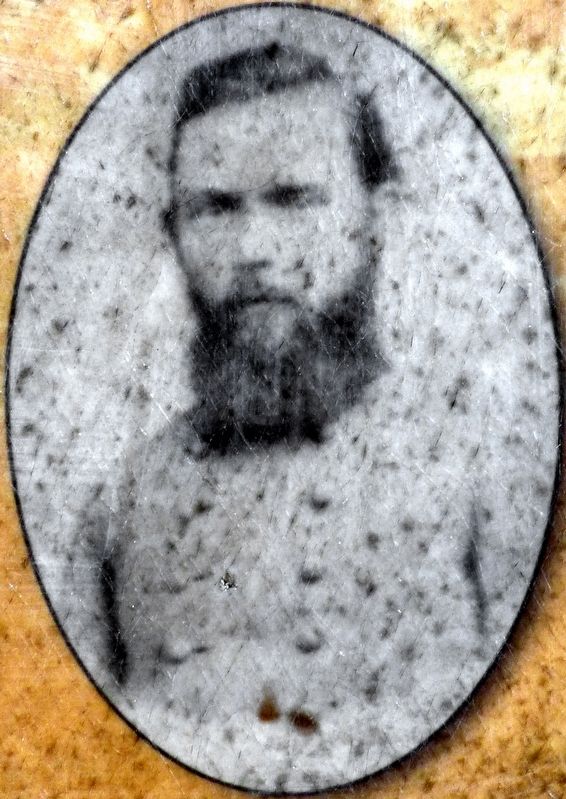
Photographed By Allen C. Browne, January 25, 2019
7. Surgeon John M. Gaines, CSA
Surgeon John M. Gaines, CSA, (1837-1915) served in the 8th Virginia Infantry when he was captured while tending to the wounded after the Battle of South Mountain. He was later exchanged, only to be captured again at Williamsport in the retreat form Gettysburg. He was temporarily assigned by his captors to tend his wounded and ill fellow Confederate prisoners at Hagerstown Female Seminary Hospital. Exchanged a second time, he served the rest of the war as a medical officer in the 18th Virginia Infantry. After the war he settled in Boonsboro and in retirement lived on North Potomac Street in Hagerstown. Close-up of photo on marker
Credits. This page was last revised on April 18, 2019. It was originally submitted on January 28, 2019, by Allen C. Browne of Silver Spring, Maryland. This page has been viewed 559 times since then and 158 times this year. Last updated on January 29, 2019, by Carl Gordon Moore Jr. of North East, Maryland. Photos: 1. submitted on January 28, 2019, by Allen C. Browne of Silver Spring, Maryland. 2. submitted on January 29, 2019, by Allen C. Browne of Silver Spring, Maryland. 3, 4, 5, 6, 7. submitted on January 28, 2019, by Allen C. Browne of Silver Spring, Maryland. • Bill Pfingsten was the editor who published this page.
